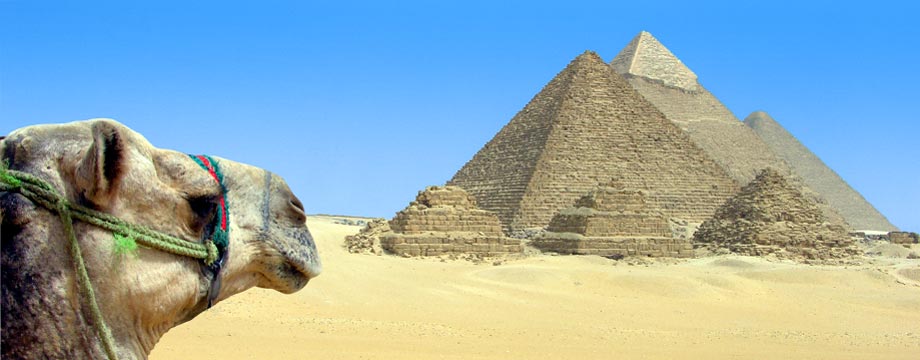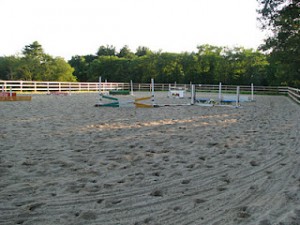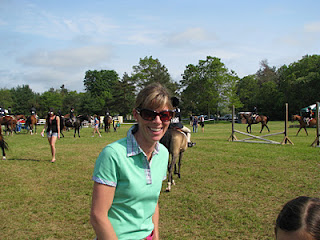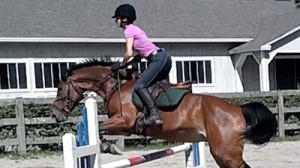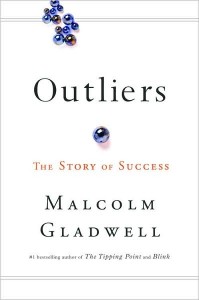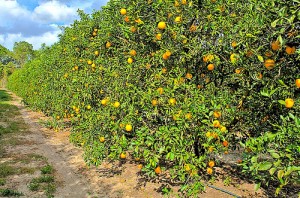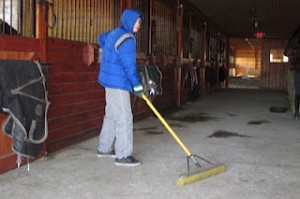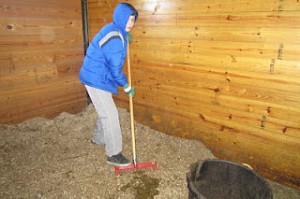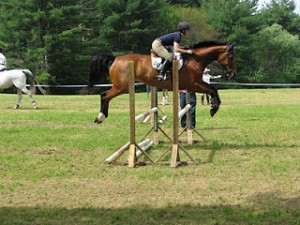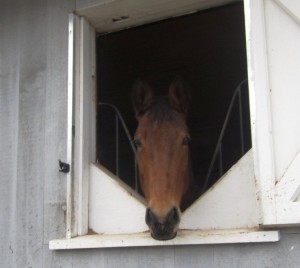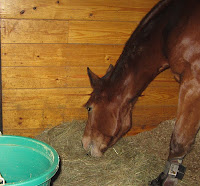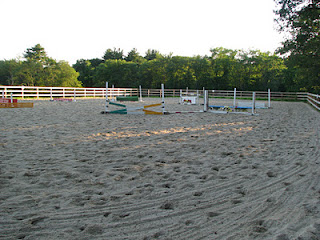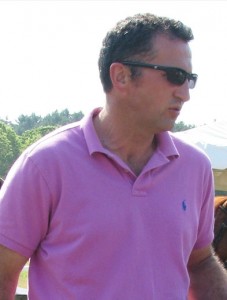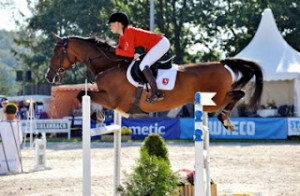I am psyched! This morning is my private lesson, and I get to practice jumping. I made a point to check the weather forecast on Sunday to identify the best weather day so I could train in the outdoor ring since that’s where the fences are.
The forecast noted that today, actually this morning, was the pick of the week. It is supposed to rain this afternoon and then the temperature will drop, starting tomorrow, and continue downward for the remainder of the week. Oh, the joys of New England.
I generally avoid scheduling lessons on Tuesdays because GEF has its staff meetings at 10 and I don’t like to be late (and I don’t like to rush the time after my lesson either). However, I made an exception because, with all of the rain we have been getting over the past SEVERAL MONTHS, I haven’t had the opportunity to jump as much as I would like. To that end, I decided to plan ahead based upon the forecast (a novel concept which I plan to do weekly from now on) so that it would ensure my jumping in my lesson. Phew, so there you have it.
Back to the blog topic at hand…
My trainer has me do some flat work to start warming up me and Jaliska. During her canter, he notices her switching her lead behind. He says it’s because I’m not supporting her head enough. I need to keep her head up at all times. So I try this and it seems to work. He also wants me to SLOW DOWN. I have a tendency to go TOO FAST. So I slow down to what I feel is a snail’s pace but it makes him happy, so we stay at this gait for a few laps.
Once Jaliska and I have sufficiently warmed up, he sets up a trot pole in front of the plank. J and I trot to it, jump the plank and then canter four strides to the green box. I am not in good form.
We work on my sitting up after the first jump and relaxing to the second jump. It seems that when I sit up I move my body forward causing Jaliska to speed up and canter to the second jump in three strides instead of four. I work on being relaxed. I also work on keeping my hands on her neck and heels down and out per my last lesson with Catherine.
Since we have added an extra jump, it no longer makes sense for me to keep my hands on her neck for two strides after the jump, like I did with just one jump (in my previous lesson). So much for consistency. What works for one may not for two and so the story goes. I’m learning…
My trainer adds a diagonal jump set to the course. Tracking left, I trot around the corner to the plank, canter four strides to the green box, then I round the corner and transition to a trot. I continue at trot to the crossrail then canter three strides to the red box, canter to the corner and REPEAT.
It takes me several iterations to finally relax in between the jumps and then it all goes pretty well. If only I could do that from the get go…. Practice, practice, practice!!
Take away for the day: Take responsibility for your mistakes, never blame your horse.
For example, if you get distracted by, say someone walking up to the fence as you are headed for the jump, then say: “I got distracted by…” not “J got distracted by…”
I was once told that you can insult a trainer’s wife but not their horse. You get the point.

